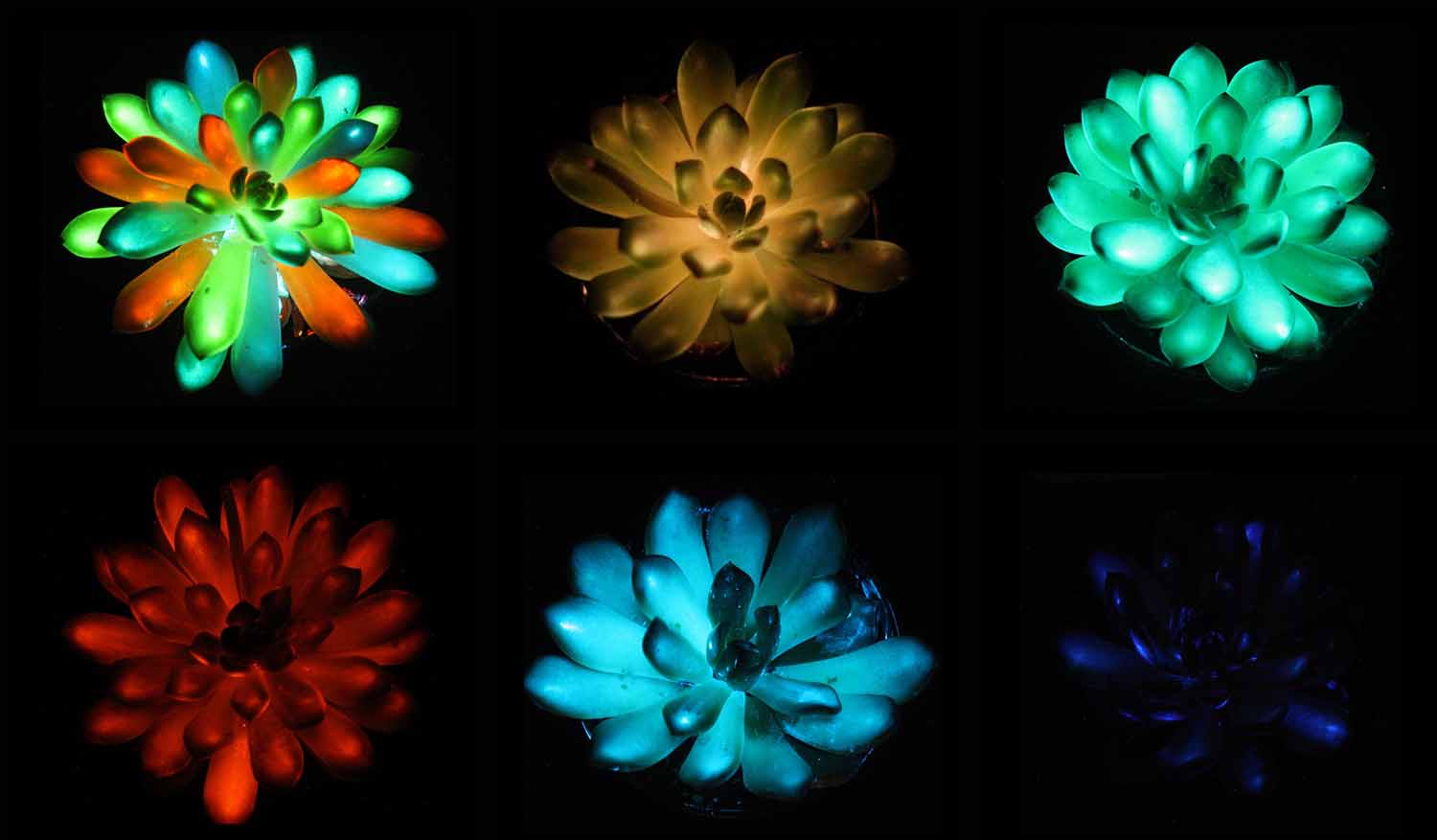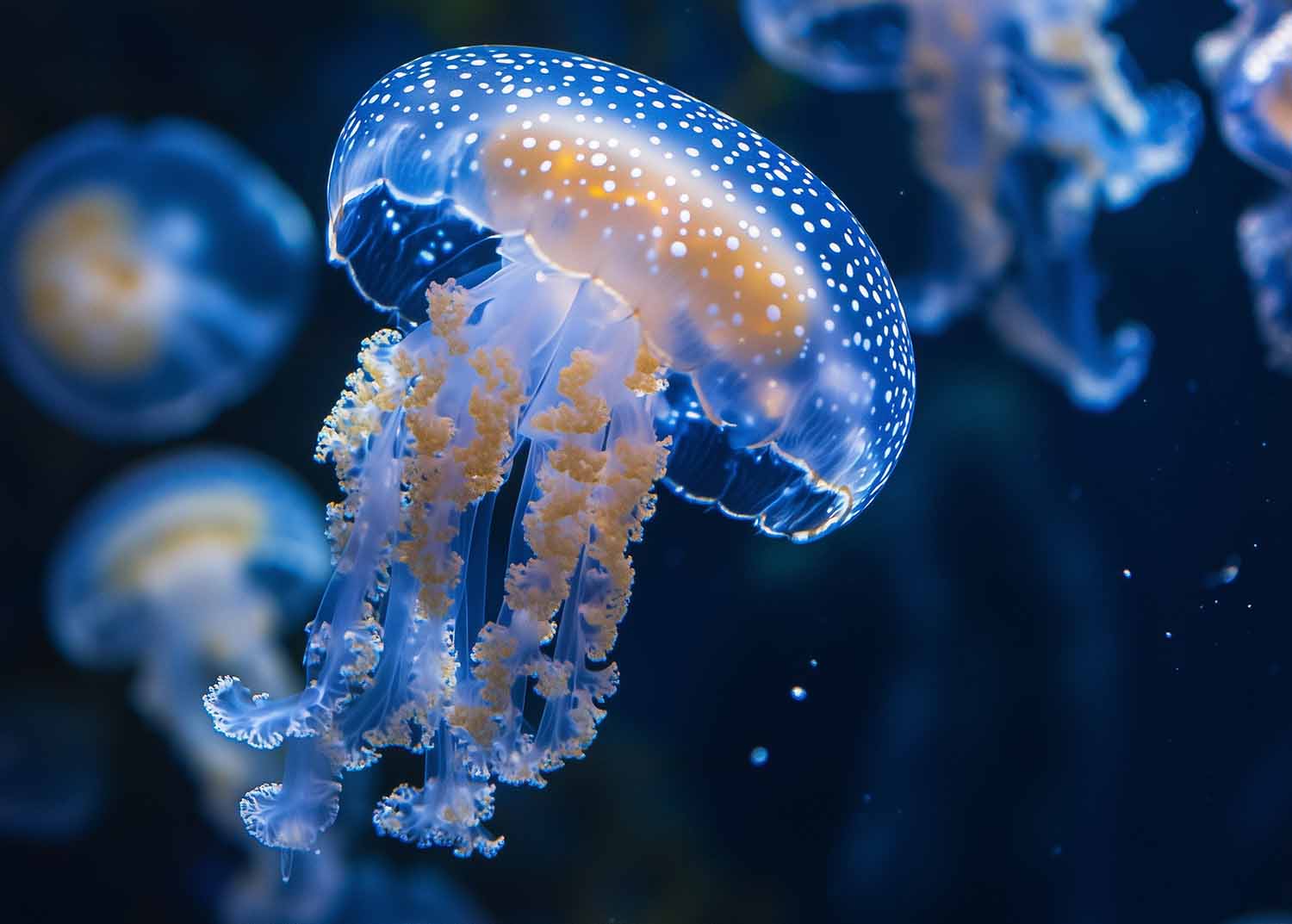A Glowing Success for Succulents
Scientists have created glow-in-the-dark plants as a possible nighttime light source.

Shuting Liu, et.al. /Matter magazine, courtesy of Cell Press
Scientists were able to make these succulent plants glow in the dark.
Imagine taking an evening walk and passing trees glowing like rainbows along the sidewalk or having a blue, glow-in-the dark houseplant as a night light! This is the reality Shuting Liu envisions after creating glow-in-the-dark succulent plants that recharge in sunlight.
“Picture the world of [the movie] Avatar, where glowing plants light up an entire ecosystem,” said Liu, a scientist from South China Agricultural University. “We wanted to make that vision possible using materials we already work with in the lab. Imagine glowing trees replacing streetlights.”
Liu and her colleagues found a way to inject bioluminescent compounds directly into succulent plants, causing the leaves to glow. A succulent is a type of plant with thick, fleshy leaves such as an aloe or cactus. The compounds—called afterglow phosphor particles—absorb light energy from the Sun during the day and slowly release light over time, showing up particularly well in dark places or at night. The injected phosphor particles can come in greens, yellows, reds, and blues.
The research team began this project looking to make a sustainable alternative for dim outdoor lighting. They had tried injecting bioluminescent compounds into other types of plants, like bok choy, but it was the succulents that glowed best.
The researchers were able to create a wall of 56 glowing succulents. The light was bright enough to read texts and illuminate objects. The glowing effect does fade and is not permanent, so the researchers are continuing to study the possibilities for using these glowing plants as lighting options.
“I just find it incredible that an entirely human-made, micro-scale material can come together so seamlessly with the natural structure of a plant,” said Liu. “The way they integrate is almost magical. It creates a special kind of functionality.”








